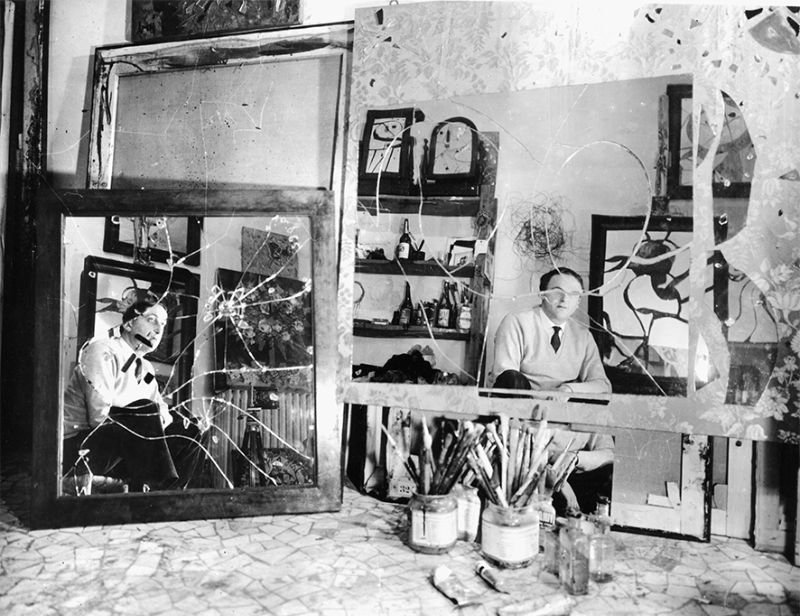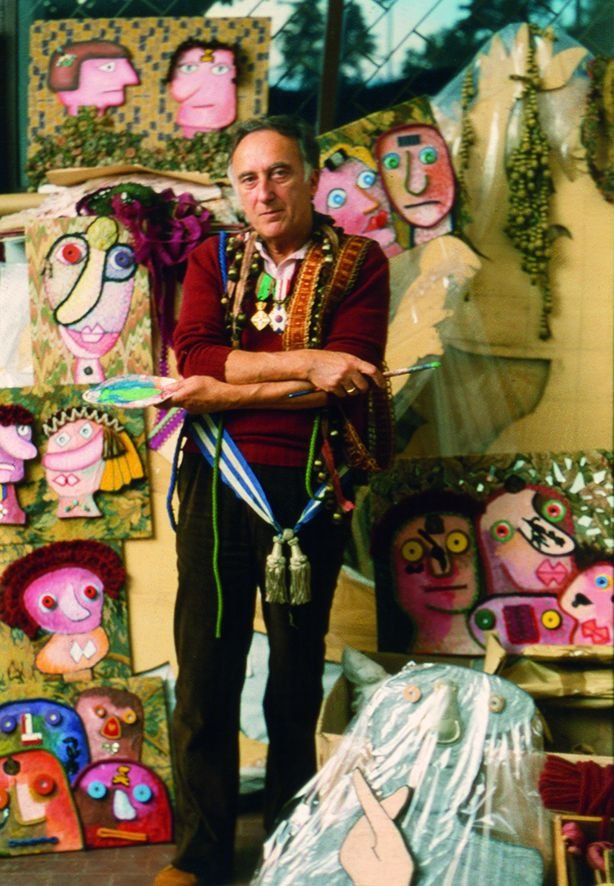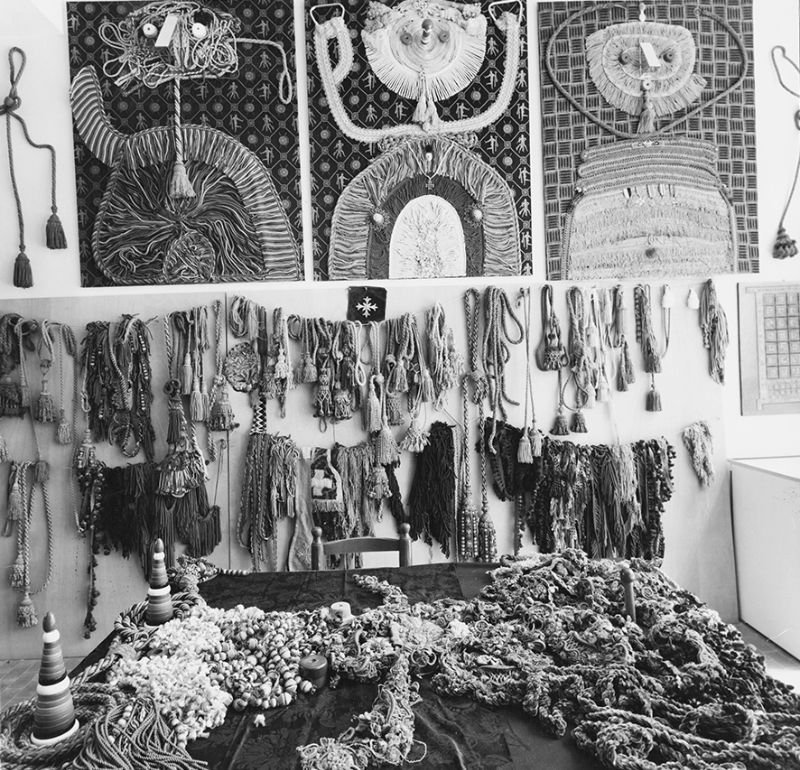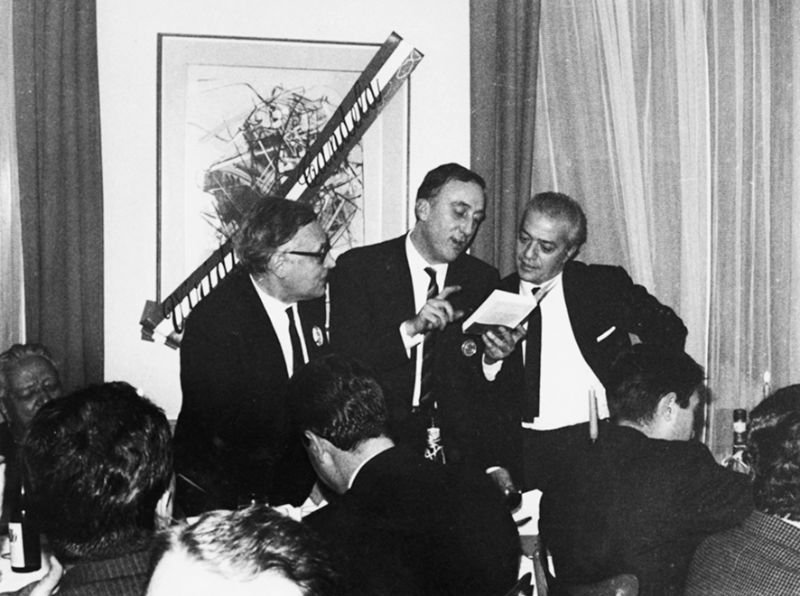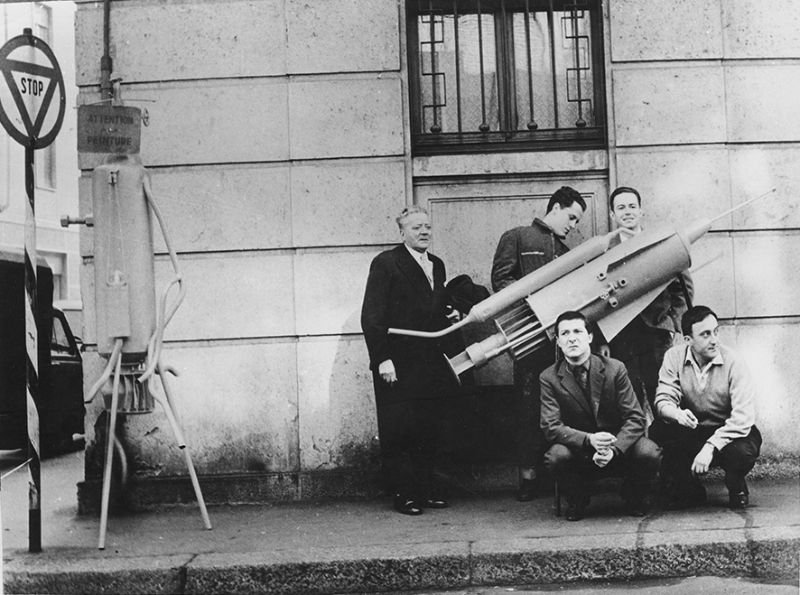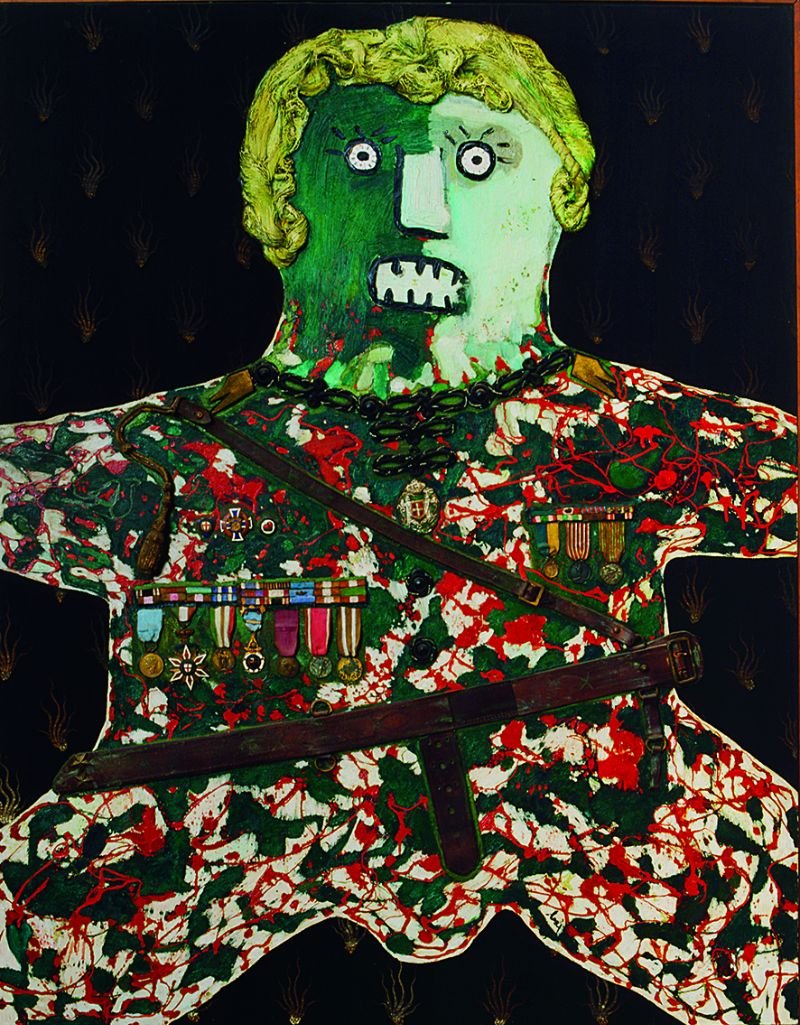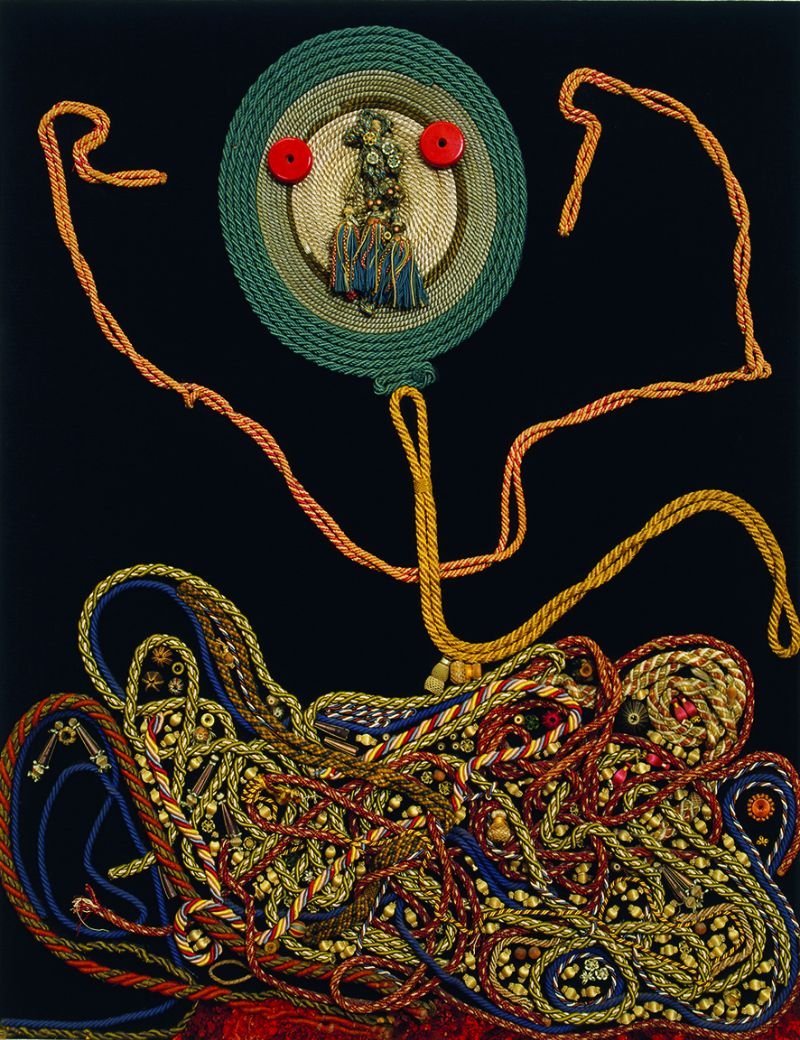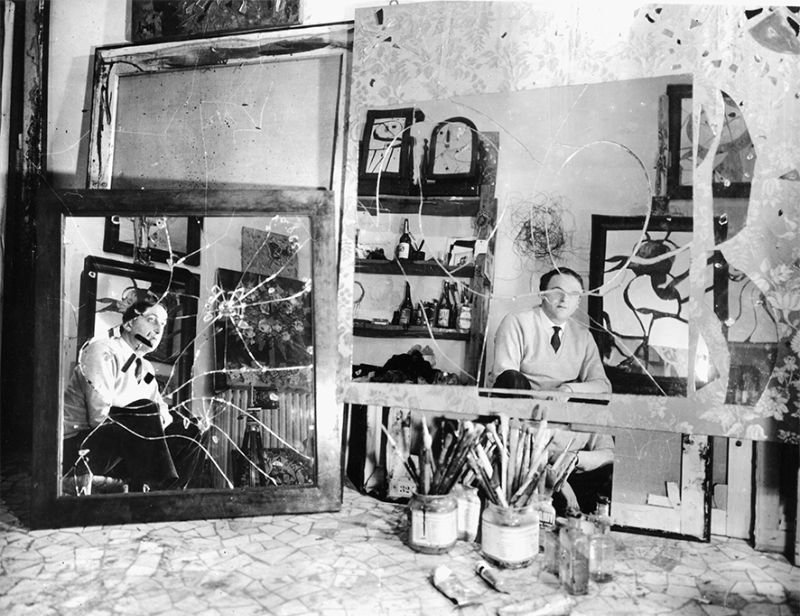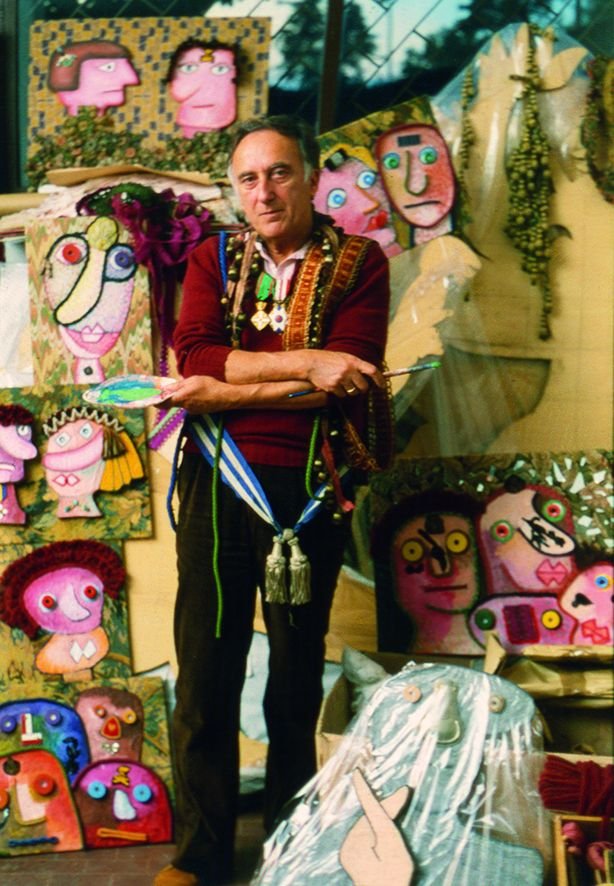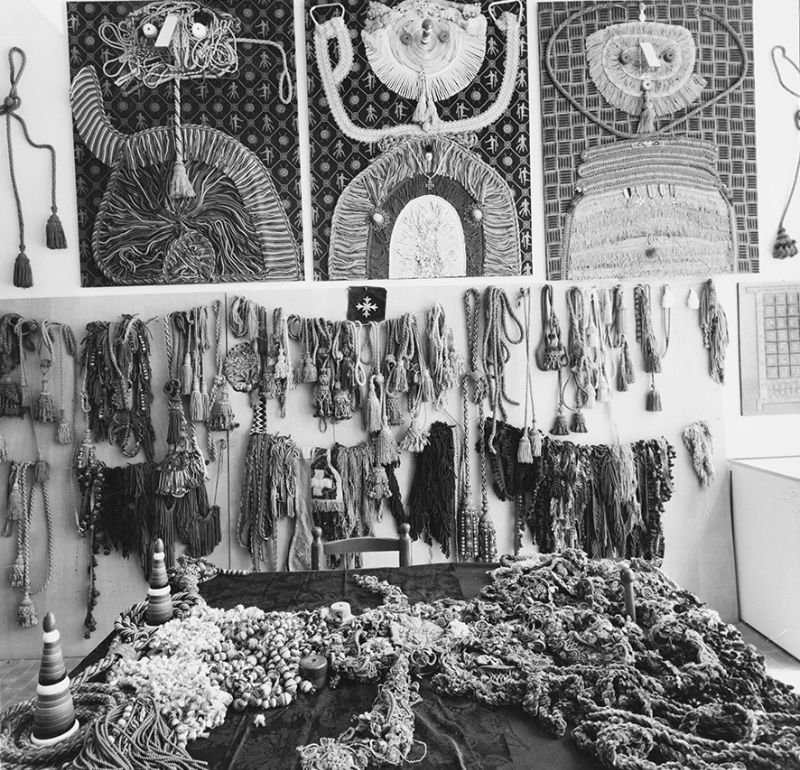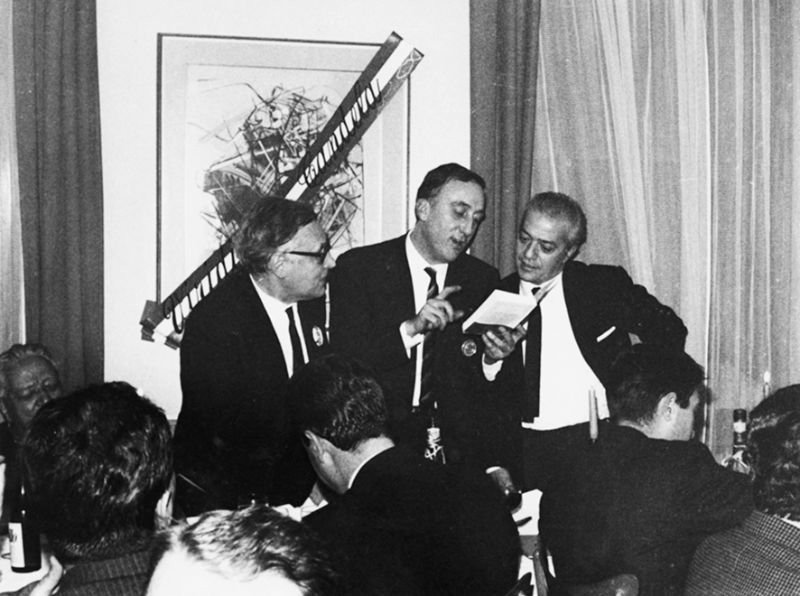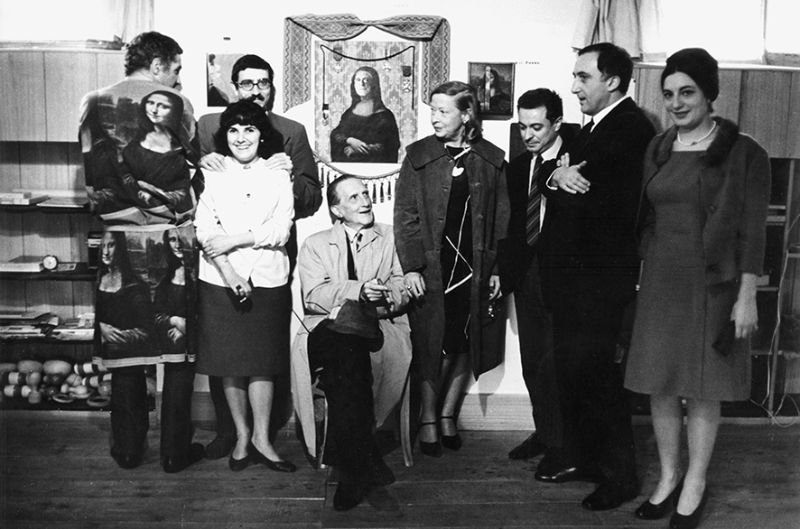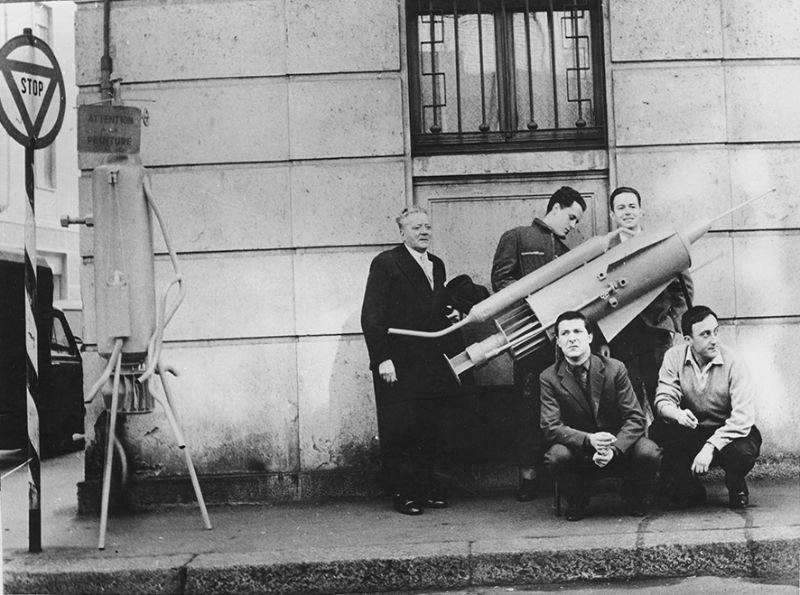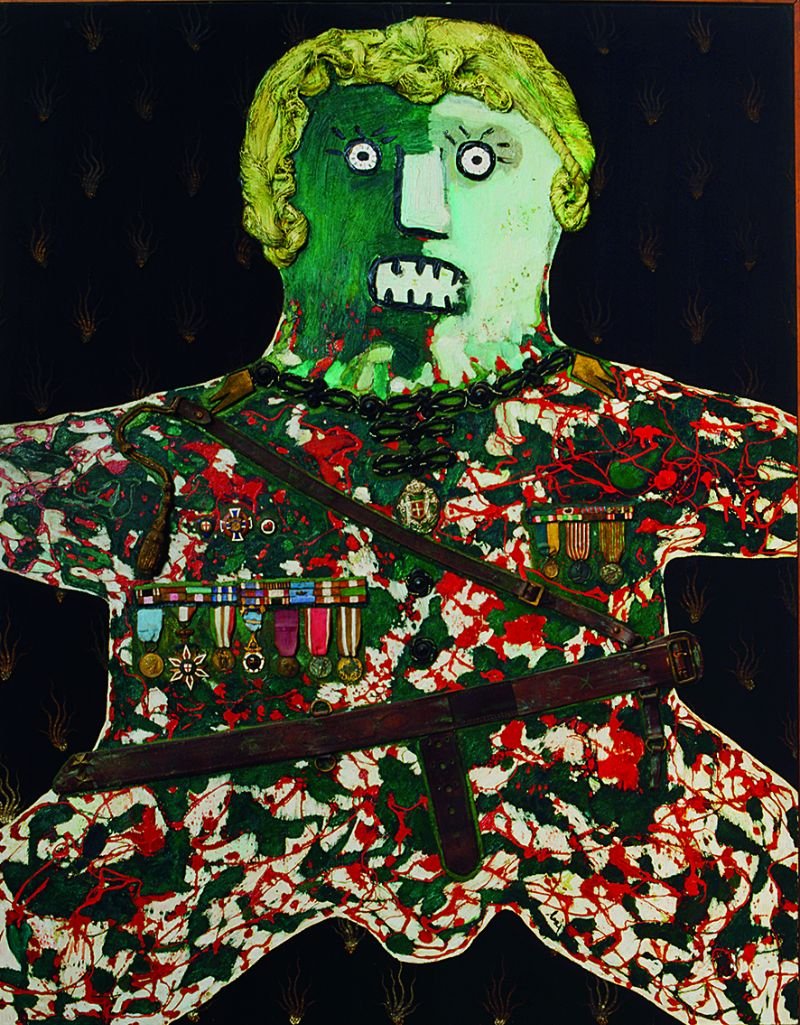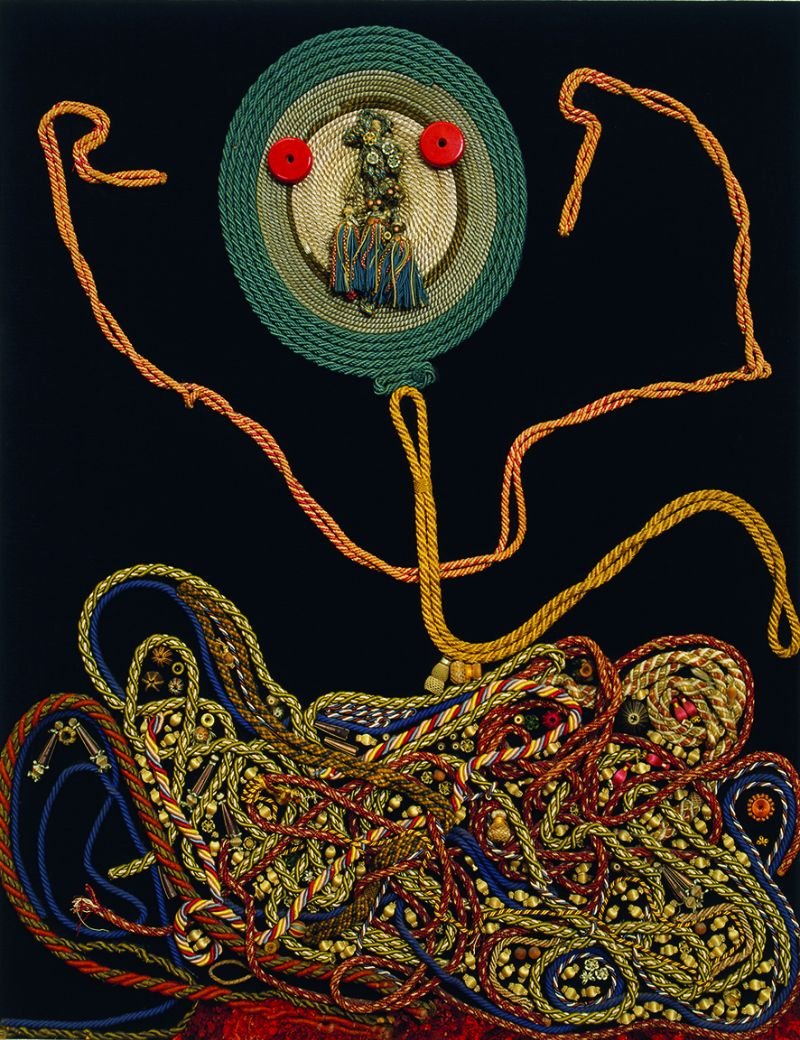Automitobiografia
Marcel and Suzanne Duchamp, Octavio Paz and Edoardo Sanguineti, Breton and Man Ray, de Chirico and the Duchess of Beaufort are just some of the names that make up the fauna of this perceptive, erudite and, at times, explosive account, far removed from any autobiographical conventions. Working backwards from 1983, the year of publication, to 1924, the year the author was born, Automitobiografia is a kind of hyperbolic journey back along the flow of events. From the first pages it immerses us in the contemporary visual culture and seems to be a response to the trends in “high” art and citationality at that time. Baj was only too familiar with such experiences, in that, since the 1960s, he had been a skilled creator of playful versions of the works of the grand masters, as in the Chez Picasso series or compositions such as La cravatta di Jackson Pollock and the Vendetta della Gioconda. This also led him in his later work to collect – alongside a repertory of icons, themes and styles from the past – a gaudy arsenal of bric-a-brac, medals, braids and trimmings, sequins, fragments of damask, rosettes and all kinds of stuff that filled his studio. This constant reclamation and accumulation is translated at narrative level into a great assemblage of memories, reflections and citations borrowed from artists and intellectuals of every period and origin, first and foremost his brilliant mentor Alfred Jarry and pataphysics, the true “science” and mainstay of the irony that permeated Baj’s entire cultural universe.
Alongside the myriad characters we also get glimpses of the everyday objects in the artist’s life such as agricultural machinery, a Kawasaki bike or a lift: splendid equipment, mechanical and erotic, that not only arouses the reader’s curiosity but also backs up the social, scientific and philosophical convictions sustained by Baj, who for years fought not only for a renewal in the art of painting but also for a prophetic return to nature against the growing threat of an all-encompassing technology.
Textual index
Prefazione – Enrico Baj. Un artista allo specchio di Angela Sanna
1. Revival o l’arte del ricordo
2. Autobiologia
3. Le macchine del tempo: Alfred Jarry, Giorgio de Chirico, Raymond Roussel
4. Come si va a Palazzo Reale e si diventa Imperatori
5. Parigi-Miami-New York
6. Primo maggio 1982
7. Surama e la villa liberty
8. Vita di campagna: insalata mista e Apocalisse
9. Esperienze teatrali
10. Nixon e Pinelli
11. Le dame di casa Baj
12. Dal dinamismo statico alla libido meccanica e non
13. Il bel canto
14. Il gusto del remake: Seurat, Pollock, Picabaj e Bacasso
15. André Pieyre de Mandiargues e Raymond Queneau
16. André Breton
17. Patafisica, Giacometti e calcografia
18. 58 rue Mathurin Régnier
19. 1963: allegranza e fotti-fotti
20. Arturo Schwarz, Man Ray, Marcel Duchamp
21. I mobili, Octavio Paz, i giovani poeti
22. L’ascensore di Giorgio Marconi
23. Il gruppo napoletano, Farfa il futurista, Virgilio Dagnino
24. Le modificazioni
25. I generali
26. Le montagne, i polacchi
27. Contro lo stile, il punteggio dei quadri e Filippo Schettini
28. Édouard Jaguer, riviste d’avanguardia e Mail Art
29. Asger Jorn e cobra
30. L’ornato e il collage: il Vinavil
31. La banda, il Dangelo, Joe Colombo e il Movimento Nucleare
32. Rivolta genetica o processo immunologico?
33. 1924: Milano, Porta Vittoria
Bibliografia essenziale
Automitobiografia


